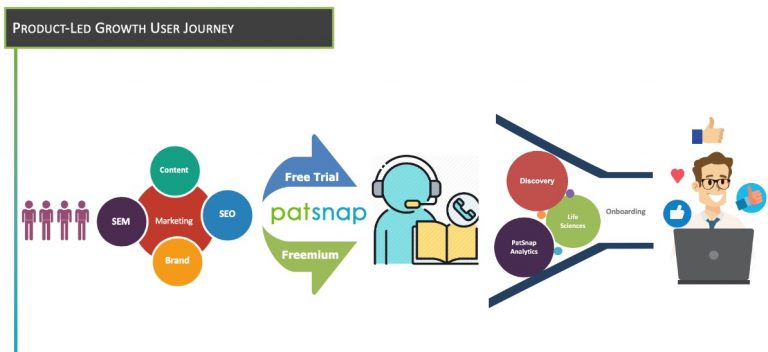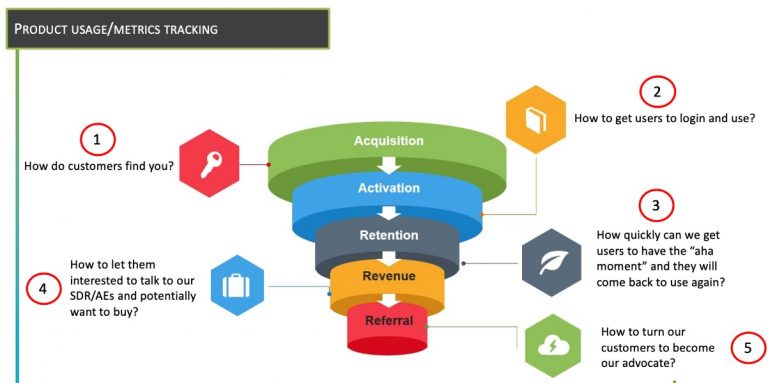From sales-led to product-led: PatSnap founder shares how COVID-19 shifted their growth strategy
It’s been 87 days since the World Health Organisation declared COVID-19 a global pandemic. As the weeks have progressed, it has become abundantly clear that there is no going back to a pre-COVID-19 era.
A new normal has formed and it has shifted the way we interact, work, live, and even consume and buy products. Famous English naturalist and biologist Charles Darwin once said, “It is not the strongest of the species that survives, nor the most intelligent; it is the one most adaptable to change.”
Adapting has been a key theme at PatSnap since the onset of COVID-19. From shifting to a new WFH model, managing the COVID situation in both our East and West offices, and adjusting to the needs of our customers during this unprecedented time, we’ve moved quickly and adapted expertly.
As a B2B SaaS business, adjusting has also meant rethinking how we sell our products and forge ahead with growing our business.
While the pandemic has been the source of a number of pain points, a silver lining has emerged. COVID-19 has allowed us to make a pivotal shift: go from being a sales-led driven company to a product-led growth company.
Out with the old, in with the new
The lead up to this shift has been a few months in the making. As a global organisation with operations in Asia, Europe and North America, our exposure to COVID-19 has spanned across three continents for the last seven months.
When the pandemic first broke in China, we began to see immediate effects on our business. I knew that I had to revise our current business strategy and time was not on my side. It was apparent that the buying and working habits of our customers were changing and our current sales methods were not going to suffice.
The APAC leadership team and I made the strategic decision to make all of our products/services free for a limited time to businesses in China, in order to support and minimise the disruption to their IP and R&D initiatives.
While our decision to provide free access was based on our desire to be customer-centric, it unintentionally set us on a path to shift our culture and business to focus on product-led growth.
Product-led growth (PLG) is an end user-focused growth model that relies on the product itself as the primary driver of customer acquisition, conversion, and expansion.
Industry tech leaders such as Zoom, Slack and Dropbox are great examples of businesses that have successfully put this model into practice. Blake Bartlett, from OpenView, wrote an excellent article on product-led growth, here’s a snippet on why he thinks PLG is the future of company growth:
With our outbound sales teams feeling the impact of companies shifting to WFH models, moving to a PLG strategy empowered our sales team to revamp their approach to sales.
Opening the door for innovative sales methods that strongly positioned PatSnap’s products enabled us to generate a pipeline of leads during one of the most turbulent economic times. Our success in China laid the groundwork for us to offer a similar free access campaign in our PatSnap West regions, solidifying our commitment to PLG.
Product-led growth is the future of B2B businesses
During the most recent Microsoft quarterly earning calls, Microsoft CEO Satya Nadella, mentioned that ��“We’ve seen two years’ worth of digital transformation in two months. From remote teamwork and learning, to sales and customer service, to critical cloud infrastructure and security —we are working alongside customers every day to help them adapt and stay open for business in a world of remote everything.”
This acceleration of digital transformation is happening, and fast. For B2B SaaS businesses, such as PatSnap, it means that we need to even further “digitise” every aspect of how we develop and distribute our products to end-users. We need to evolve ourselves from a traditional sales-led user journey to a product-led user journey.
For the past 14 years, PatSnap has predominantly operated on a sales-led business strategy. Similar to other B2B software companies, our approach required SDRs to contact prospects and introduce PatSnap’s offerings.
If a prospect showed interest, a demo of our product would be booked to illustrate the business case for PatSnap. If the demo was successful, we’d offer a short free trial period with the end goal of signing the prospect up as a customer at the end of that trial.

Don’t get me wrong, this strategy has been successful, it has served as the foundation in which our business has been able to scale and grow. But the reality is, it’s no longer the way forward and it will not be the golden ticket to our continued growth.
Customers are more strongly positioned and educated, which means the new user journey for B2B businesses needs to focus on the PLG user journey: get the user to try the product before you sell them on it.
Users need to see the value of a product themselves; this is beneficial not only for sales but also for retention. PLG places this notion at the center and enables companies with strong solutions to let the products speak for themselves.

Part of a successful PLG strategy is timing. In the early days of PatSnap, we had a good product but it likely wouldn’t have withstood the rigorous user reviews and criticism of a PLG model.
Today, after years of perfecting innovation intelligence, I am extremely confident in our products and their ability to sell themselves to prospects.
I also believe allowing users to test our products from the start will enable us to be more efficient in increasing product adoption. In turn, an increase in product adoption helps lower customer cost acquisition (CAC) resulting in better retention overall.
How is PatSnap approaching PLG?
PLG strategies are not cookie-cutter. Companies will often pick and choose various elements to suit their customers and end goals. At PatSnap we’ve decided to approach PLG by implementing the following:
Offering all our products for free within a limited time frame
Our free access campaign, which first launched in Asia in February and has now been launched in Europe and North America, was started as a method to support the IP and R&D community and generate leads.
Since launch, our leads have grown 2-3x more than pre-COVID days and we’ve seen consistent traction on weekly sign-ups from prospects and customers to try our products at no costs. The below chart shows PatSnap China’s lead generation growth since launching the free access campaign earlier this year.
Providing users with a sneak peek into the product outputs while generating leads and brand awareness.
Later this month, we will be launching our new lead generation freemium website www.connectedinnovation.io. Inspired by HubSpot’s Website Grader, our website is intended to provide users with information on any company’s innovation profile. Users simply type in a company name, click generate a report and after submitting a few contact details, they will be provided with a one-page report on the company’s innovation strategy for free.
The report is intended to be high-level and provides users with a taste of the outputs that PatSnap can provide. The goal of this site is to provide an additional avenue for lead generation while expanding PatSnap’s brand awareness among a wider audience.
Note: Lead generation freemium models are not the same as a self-serve freemium model like Zoom, where users can try the product out and buy it using a credit card if they like it.
Letting users discover the “aha” moments.
Offering free access to a product is only one half of the equation. Ensuring that users can quickly and easily onboard is the other. PatSnap is often praised for having a very simple and user-friendly interface but learning to navigate the product in its entirety isn’t always intuitive for everyone.
We want to make the onboarding experience so easy and so friendly, that customers can navigate through the experience on their own, at their own pace. By incorporating automated and user-friendly sign-ups and onboarding, we can enable users to discover the “aha” moment of PatSnap on their own (ideally within the first 5-10 minutes after login).
This moment is powerful because it often leads to users becoming brand advocates who will willingly refer your product to others because they can easily articulate the value and use case from their own experience.
Just like sales funnel metrics but focused on product
Lastly, just like how Sales and Marketing teams use the sales funnel concept, product teams within PLG environments use growth funnels to track acquisition, activation, retention, and revenue.
This is known as know as the AARRR funnel. We want our product teams to not only understand the product but see how these metrics relate to the product and use them on a more regular basis to enhance the user experience.

While COVID-19 continues to unfold, I believe that the new digital transformation will be PLG. Relying on outbound sales and inbound marketing may not disappear but we will likely see its effectiveness decline, making way for other opportunities to connect with users and prospects.
I strongly believe that if SaaS organisations want to continue to survive in the post-COVID world, we all have to adapt, and for PatSnap that means leaning more into PLG and showing the strength of our expertise through the power of our products.
Source: e27 | written by Jeffery Tiong, Founder & CEO at PatSnap
View original content here.